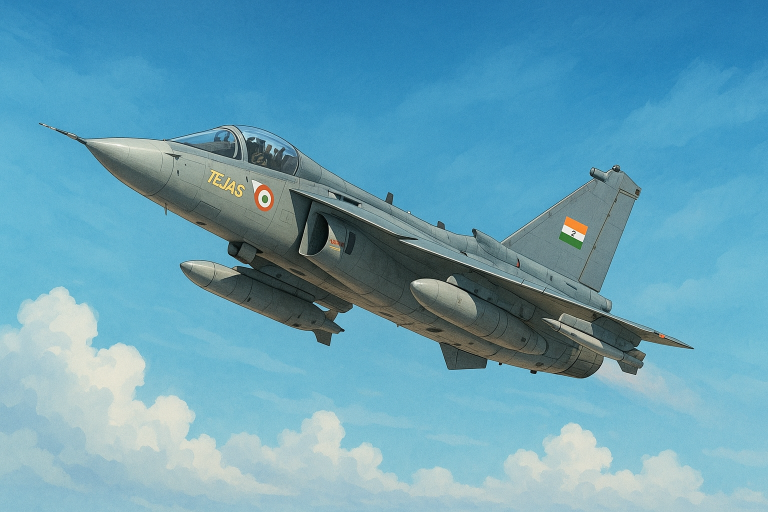India’s Hindustan Aeronautics Ltd (HAL) shares fell as much as 4.13% to Rs 4,405 on Monday, heading for its steepest single-day decline since April 7, after an Indian Air Force (IAF) Tejas fighter jet crashed during an aerial display at the Dubai Airshow.
The stock opened at Rs 4,425 apiece — its lowest level in more than 10 weeks, and extended losses that investors have historically associated with aircraft accidents involving the state-run manufacturer.
HAL shares are still up 7.3% year-to-date.
The IAF confirmed that the pilot sustained fatal injuries in the November 21 crash, prompting the service to launch a court of inquiry.
Videos circulating online showed the single-seat aircraft losing altitude rapidly before hitting the ground, sending up a plume of black smoke and halting flying displays at the biennial aviation event.
Crash raises operational questions for key defence programme
The Tejas took off for its demonstration at 12:15 p.m. local time before losing altitude at around 2:10 p.m. while performing aerobatic manoeuvres.
The incident marks the second crash involving the light combat aircraft in under two years: a Tejas fighter jet went down in Rajasthan in March 2024, the first accident since the jet began flying in 2001.
The Tejas is one of India’s most prominent indigenous defence projects, a single-engine, 4.5-generation multirole aircraft developed by the Aeronautical Development Agency and built by HAL. With 180 units on order, it remains HAL’s flagship combat platform.
Analysts say the crash introduces near-term operational and reputational challenges at a time when reliability is crucial for securing future orders.
Citing experts, CLSA said potential causes could range from a GE-manufactured engine thrust loss to aerodynamic stall effects or human error.
The brokerage, which maintains an Outperform rating with a price target of Rs 5,436, said HAL’s long-term fundamentals remain intact and sees volatility as an opportunity to accumulate shares, backed by a $54 billion order pipeline, upcoming fighter jet deliveries, and clarity around the GE engine deal.
GE separately said it stands ready to support the investigation.
India’s defence manufacturing ambitions in focus
The crash comes during a period of heightened scrutiny for India’s defence-manufacturing programme.
HAL is central to the initiative, building platforms including the Prachand light combat helicopter, the Light Utility Helicopter, and the HTT-40 basic trainer, along with upgraded variants of the Su-30.
The company is also advancing work on indigenous engines such as the HTSE-1200 turboshaft and developing advanced aviation systems through new partnerships.
These efforts are part of a broader national strategy to strengthen domestic aerospace capabilities and reduce reliance on imports.
Any disruption to the Tejas programme will be closely monitored, particularly as the government increasingly ties procurement cycles to indigenous production goals.
Market reaction and the road ahead
HAL recently posted revenue and profit growth for the September quarter, though margins contracted as the company scaled up production across multiple programmes.
Analysts say the inquiry’s findings will be critical in assessing whether the crash may affect manufacturing timelines, upgrade plans, or future deployments of the Tejas fleet.
Investor sentiment remains cautious but not uniformly negative.
Data compiled by LSEG shows 20 analysts holding “buy” ratings on average, with a median target price of ₹5,800.
For now, the market is awaiting clarity from the formal investigation — the outcome of which will likely determine the durability of HAL’s current correction and its broader impact on India’s defence-production roadmap.
The post HAL shares slide after Tejas crash at Dubai airshow; inquiry underway appeared first on Invezz

